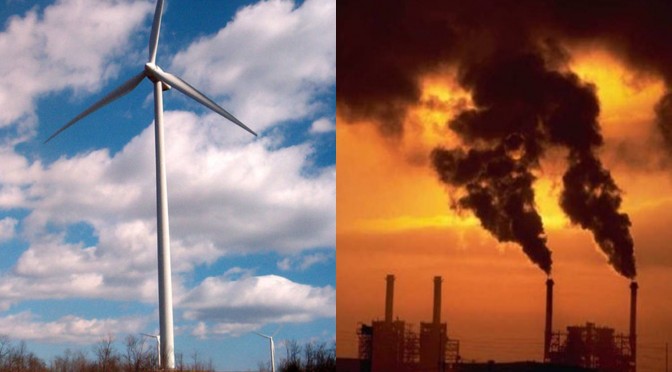To better understand the state of knowledge of greenhouse gas (GHG) emissions from utility-scale wind power systems, NREL developed and applied a systematic approach to review life cycle assessment literature, identify sources of variability and, where possible, reduce variability in GHG emissions estimates through a meta-analytical process called “harmonization.”

Over the last 30 years, several hundred life cycle assessments have been conducted for wind power technologies with wide-ranging results.
Harmonization for onshore and offshore wind power systems was performed by adjusting published greenhouse gas estimates to achieve:
- Consistent values for two wind system performance parameters: capacity factor and operating lifetime,
- A consistent system boundary, through addition or subtraction of major life cycle stages, and
- Consistent global warming potentials (GWPs) of GHGs. The published and harmonized life cycle GHG emissions for onshore and offshore wind power are compared in the below figure.
Overall harmonization shows that wind is similar to other renewables and nuclear energy and much lower than fossil fuel in total life cycle GHG emissions. In addition, the harmonization process increased the precision of life cycle GHG emission estimates in the literature while having little effect on published central tendency.
Harmonization Impact on Variability and Central Tendency
Overall, harmonizing for all parameters (capacity factor, system lifetime, system boundary, and GWPs) resulted in a significantly tighter distribution than the published GHG emission estimates for wind power systems. The published GHG emission estimates ranged from 1.7 to 81 g CO2eq/kWh, whereas harmonized estimates comprised a much smaller range of 3.0 to 45 g CO2eq/kWh, a decrease of 47% in the total spread of the data. The interquartile range decreased from 12 to 10 g CO2eq/kWh, a 14% reduction.
Of all the harmonization parameters investigated, adjusting to a consistent capacity factor had the greatest impact on reducing variability in GHG emissions estimates.
Harmonization reduced the central tendency of GHG emissions estimates for wind systems by about 10%.
Comparison of Harmonization Impacts on Onshore to Offshore Wind Technologies
The median published life cycle GHG emission estimates for onshore and offshore technology types are both 12 g CO2eq/kWh and 11 g CO2eq/kWh after harmonization. This similarity, combined with the tight distribution for both technology types, suggests that the two technology types may not have significantly different life cycle GHG emissions.
Given the large number of previously published life cycle GHG emission estimates of wind power systems and their narrow distribution, it is unlikely that new life cycle assessments of similar wind turbine technologies using similar system boundaries will greatly differ, although additional research is recommended regarding the GHG implications of integration of variable wind generation on the grid.


